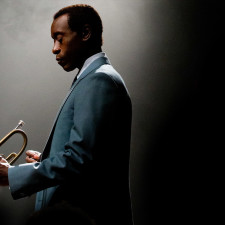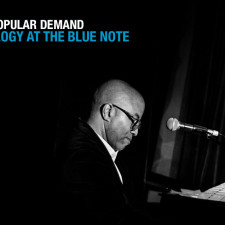
Miles Davis
For the past 30 years, jazz has seen a steady transformation from pop music to art music. Many of today’s most prominent jazz musicians and bands are on financial “life support” by various philanthropic foundations that strive to preserve the arts. With jazz a proverbial endangered species in the musical world, the question is posed: “Can Jazz be Saved?”
Throughout the 20th century, African Americans have used jazz as an avenue in which to express their struggle against adversity. It is not coincidental that jazz’s popularity dwindled with the passing of civil rights legislation and thereby the consequent eradication of the legal divide between the two races. If jazz is to reaffirm it’s standing in the frontier of American pop music, then it is going to have to adapt to the times. Even today, nearly 45 years since the passing of the Civil Rights Act of 1964, jazz music holds the reputation of symbolizing black struggle in the 20th century. Overcoming this stereotype will be difficult, as jazz music and its meaning have been embedded in the very foundation of American society for almost one hundred and fifty years, but doing so will prove pertinent to the genre’s survival.
One band that was successful in blending jazz with modern pop music was Weather Report, in their song Birdland. Technically, the song is rather rudimentary as it constantly repeats phrases and figures, but nevertheless the song somehow is very catchy. It is very upbeat, uses electric instruments, and almost has a Rock n’ Roll feeling to it. If current jazz groups could emulate Weather Report’s innovation in terms of catering jazz songs to modern pop standards, then jazz not only has a chance of survival, but an opportunity to thrive.
Weather Report – Birdland
Miles Davis also embraced the idea of blending jazz traditions with contemporary pop music. Even though he was frequently censured for “selling out,” Miles Davis did exactly what needs to be done in order to maintain jazz’s appeal. In order to counter the rise of Rock music, Davis refused to play songs from earlier eras and stuck to avant-garde pieces that featured electronic instruments and Rock N’ Roll structures. Davis’s innovation is portrayed in his piece Electric 73.
Miles Davis – Electric 73
Even though jazz’s future may seem uncertain, its relevance and position in mainstream music can be revived. Jazz icons such as Miles Davis and Weather Report took the first much-needed step toward innovation and compromise…now current jazz musicians just have to follow suit.
Colin Zelicof
Tags: Jazz, Miles Davis, Weather Report


 Share On Facebook
Share On Facebook Tweet It
Tweet It







![[Philly EVENT] Screening of Amazing: A Film about Bud Powell](https://musiqology.com/blog/wp-content/uploads/2015/03/bud-powell-225x225.jpg)




